Small, big or both? When asked about the right wheel size, you must choose between 27.5″ and 29″ wheels or a mullet setup featuring both. But what exactly is a mullet setup and which is the best wheel size? We found out for you with three brand new 2022 Canyon Spectrals.
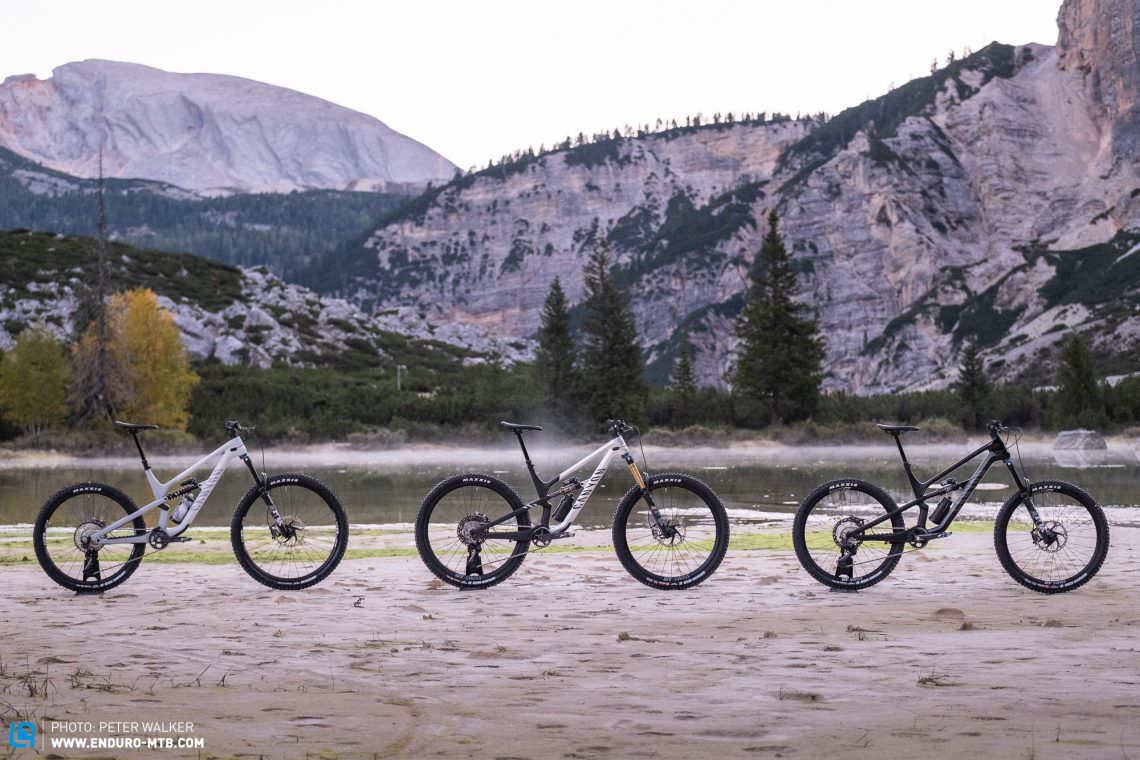
26″ is dead! Although the discussion about the old, golden wheel standard has finally been settled, the question of the right wheel size has become increasingly complex. This is because the two remaining wheel sizes, 29″ and 27.5″, give you three possible concepts to choose from. The keyword here is mullet, where a large 29er up front is combined with a smaller 27.5″ wheel on the rear. The concept of combining two different wheel sizes on the same frame isn’t new, already appearing on bikes in the 26″ era. Mullets have also long been established in the eMTB world and, since the UCI loosened its regulations on wheels of different sizes, some EWS and Downhill World Cup pros have been successful with mullet setups. But does it make sense if you’re not racing against the clock? What are the advantages and disadvantages? Which wheel concept is the most fun, and which one is best for you? With the launch of the new 2022 Canyon Spectral, we can finally answer all these questions.
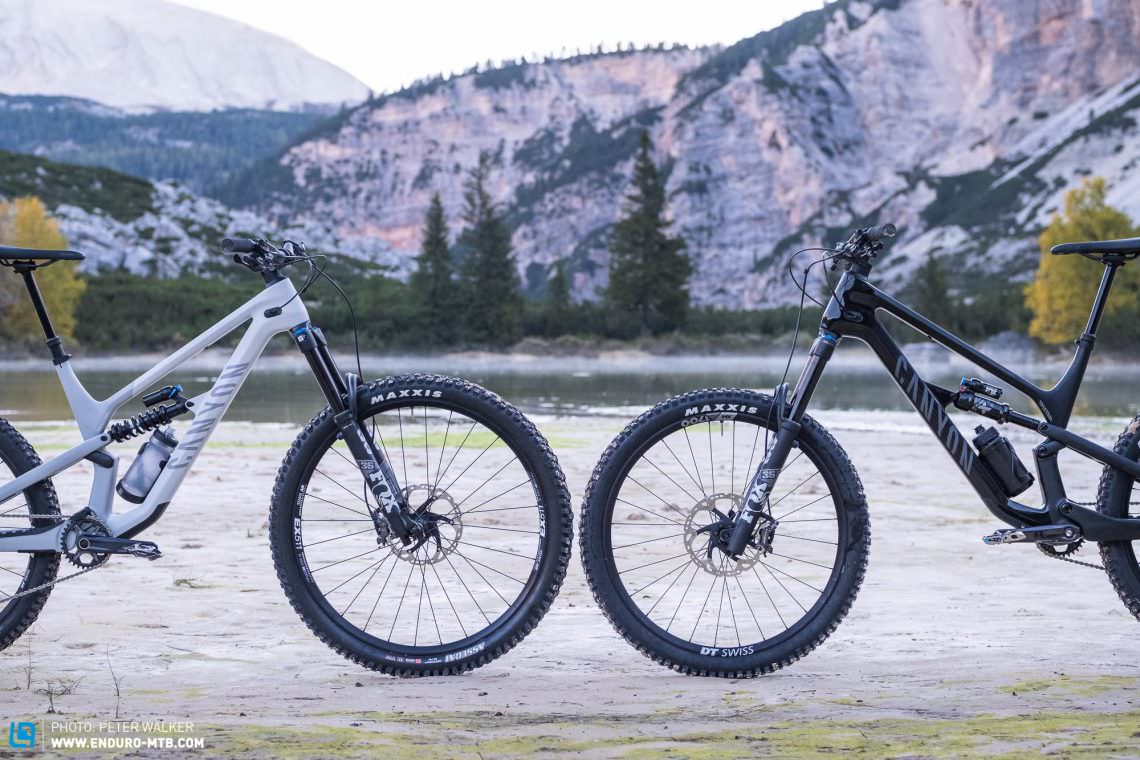

The new 2022 Canyon Spectral test bikes
Canyon have extended the 2022 Spectral range significantly, offering up to 13 models featuring different component and wheel configurations. Our wheel size showdown is based on the Canyon Spectral CF 8 with small 27.5″ wheels, the Spectral CF 8 CLLCTV, which rolls on a large 29″ wheel up front and a smaller 27.5″ wheel on the rear, and the 29″ version of the flagship Spectral CFR.
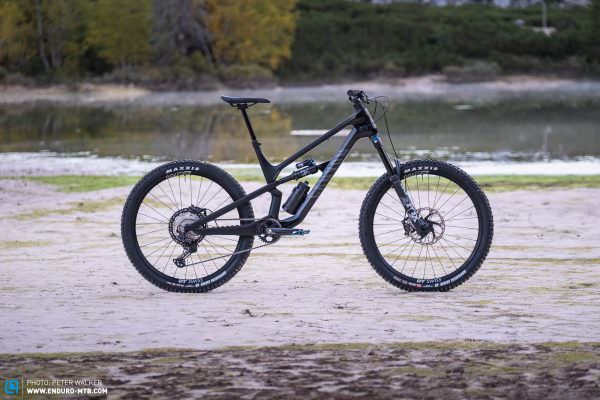
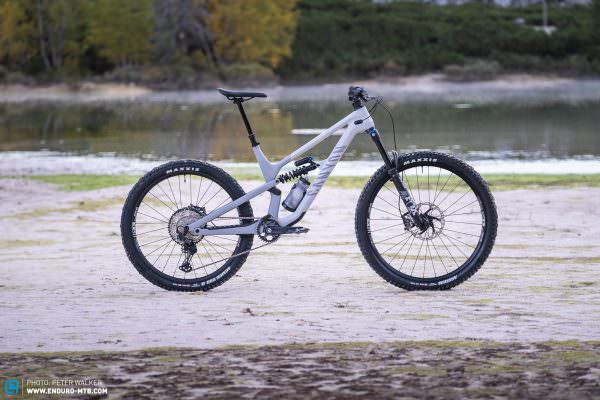
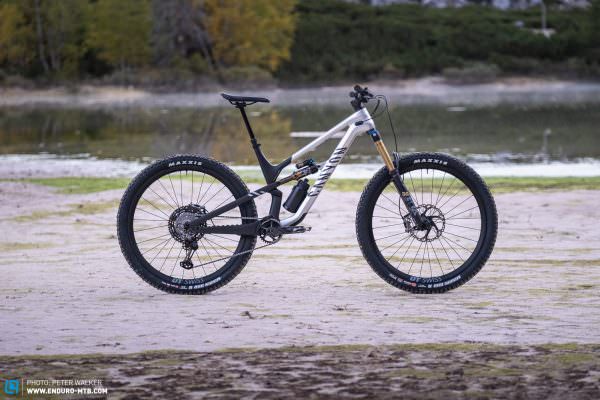
Besides a price difference of € 2,500 between the production models of the three candidates, there’s a big difference in the specs. The 27.5″ Spectral CF 8 and the 29″ Spectral CFR feature similar FOX suspension comprised of a 160 mm travel 36 fork and FLOAT X air shock, performing almost identically on the trail. The mixed-wheel Spectral CF 8 CLLCTV is the odd one out with its FOX DHX coil shock, which has an enormous effect on the suspension’s characteristics. To make the bikes – or wheel sizes – easier to compare, we replaced the coil shock on the mullet bike with the same FOX FLOAT X model as specced on the other bikes, making the rear suspension perform similarly on all three. For fairness’ sake, the one-piece carbon cockpit and DT Swiss XMC 1200 carbon wheels of the flagship 29er were replaced by Canyon’s traditional cockpit and a pair of aluminium DT Swiss XM 1700 wheels.
Never before has a battle been so comparable. The three Canyon Spectral test bikes offer the ideal basis for a fair showdown of the different wheel concepts.
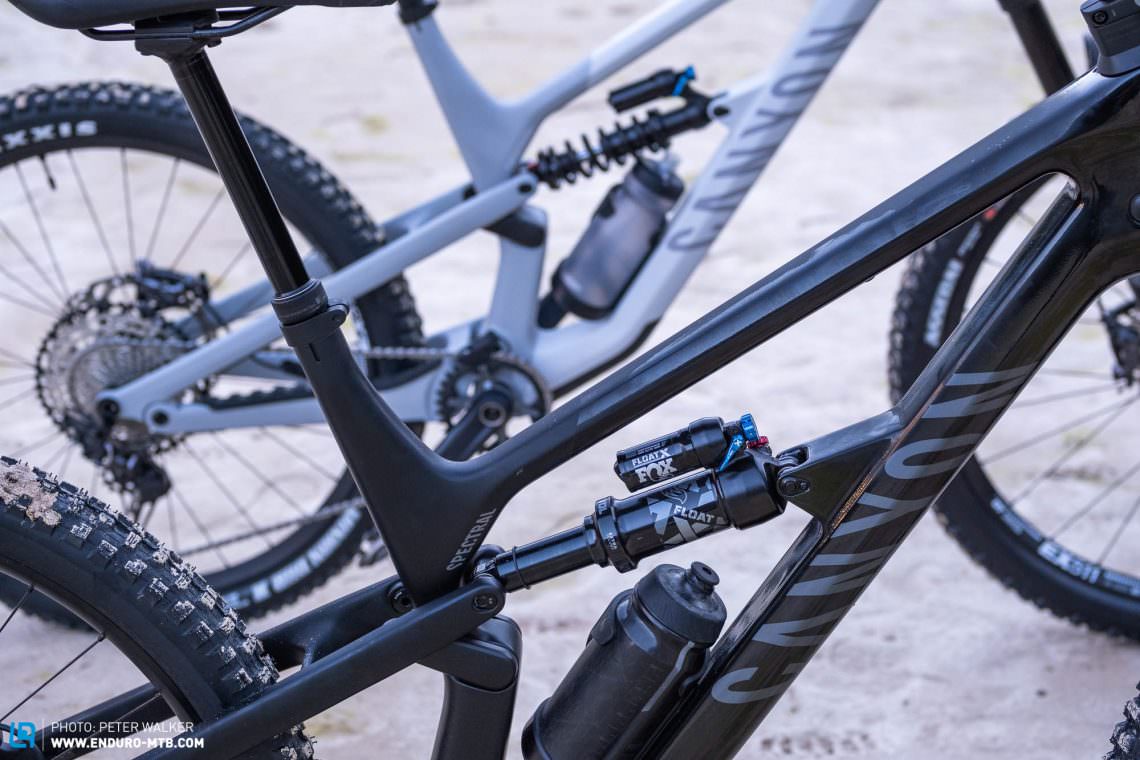


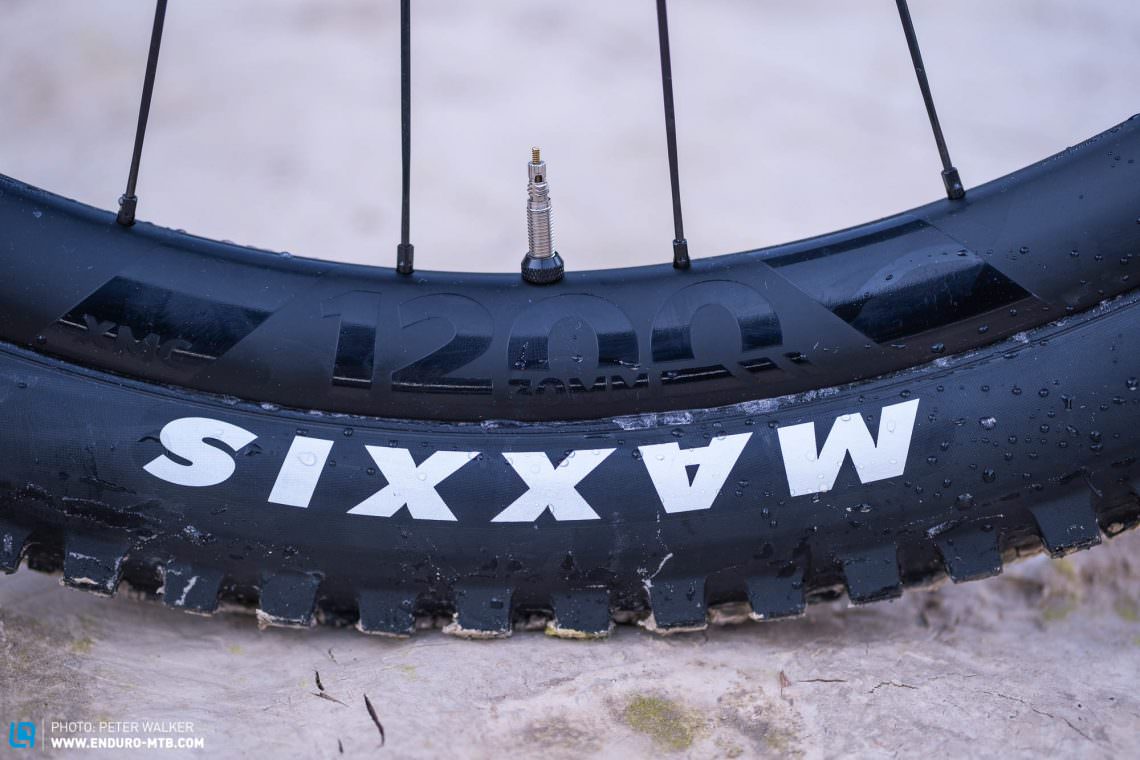
The 29″ version of the Spectral is an old acquaintance and came out on top in our big group test, claiming the title of best mountain bike of 2021. We also had the chance to put the production build of the Canyon Spectral CF 8 CLLCTV to the test for you.
The theory – Rollover characteristics, contact patch and inertia
Almost all bike manufacturers try to market the advantages and disadvantages of the different wheel sizes and concepts. Besides the obvious difference, the size, you’ll often have heard them use terms such as rollover characteristics, contact patch and inertia. But what do all these terms mean? To understand the theoretical relationship between the wheel size and these parameters, we’ll assume that all components such as tires, rims, spokes, nipples are the same, though in the respective 27.5″ or 29″ version.
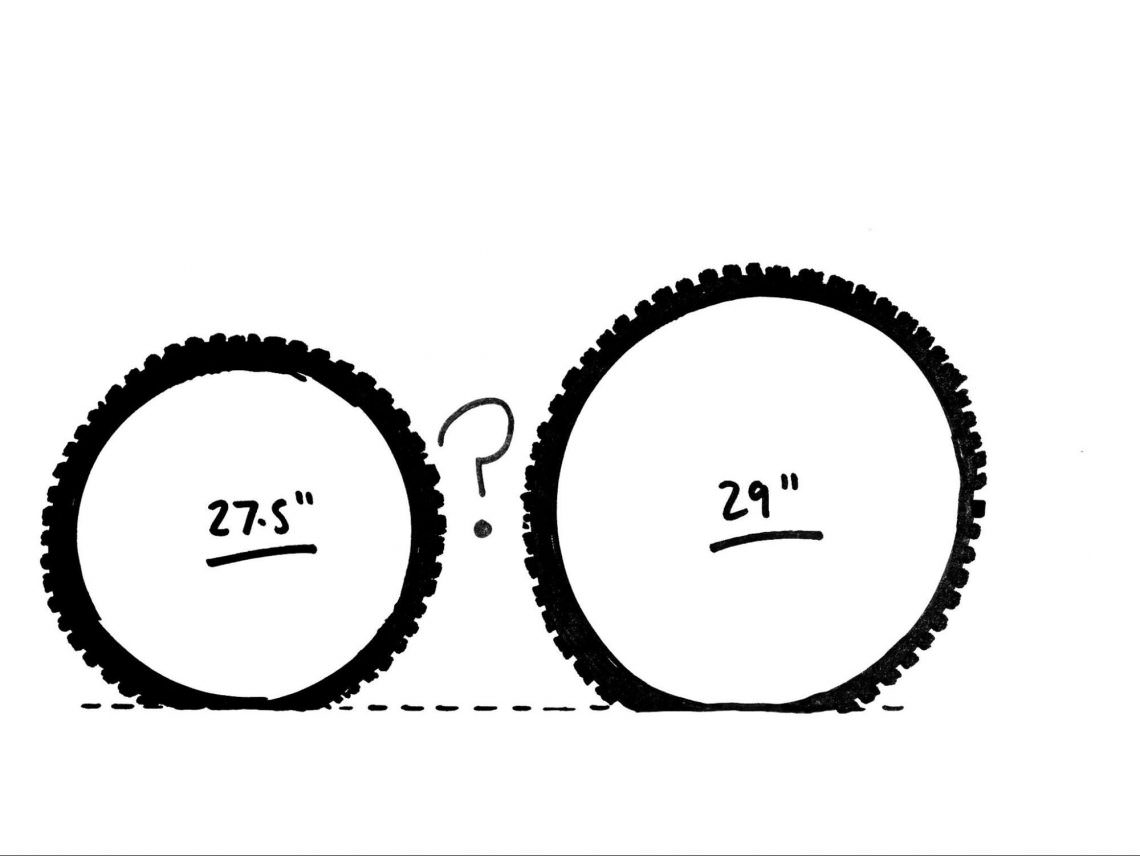
Let’s start with the moment of inertia. Even if it sounds complicated at first, it’s quite simple. The bigger 29″ wheel is significantly heavier than its 27.5″ counterpart and a large part of its mass (rims and tires) is further away from the axle. Put simply, the moment of inertia describes how much force or torque is required to accelerate or stop the wheels. Note: the influence of the radius (i.e. half the wheel diameter) is not linear but square. As such, if the radius doubles, the moment of inertia quadruples. Put simply, the larger the wheel, the greater its moment of inertia. On the trail, this means that it takes more power to accelerate the 29″ wheel from 0 km/h to 10 km/h than the 27.5″ wheel. It can also be felt on the descents, without pedalling. For example, it applies to the increased energy required when you pump your bike over rollers. But aside from its higher resistance to acceleration, the greater force needed to decelerate the big 29″ wheel is equally important and, in turn, helps keep its momentum.
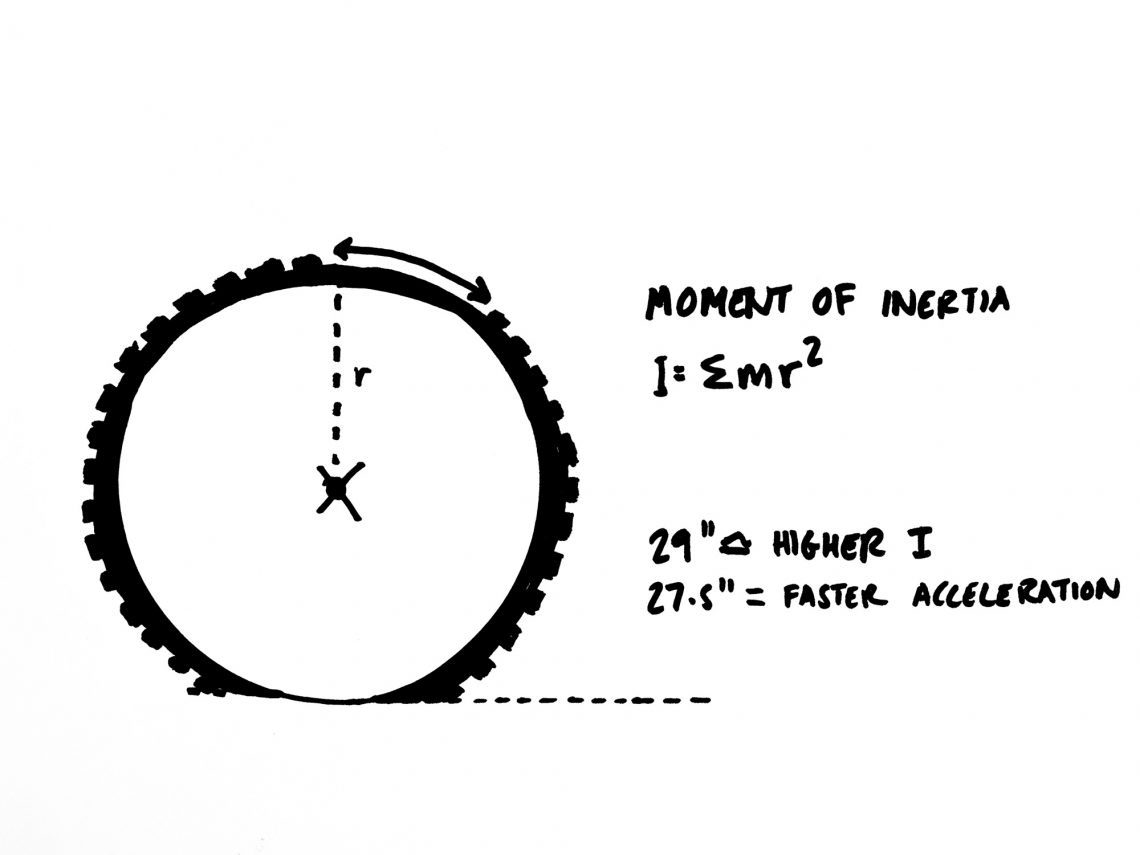
The point at which your tire contacts the ground, its footprint, is referred to as the contact patch. The size and shape of this contact patch are determined by many different factors, such as tire pressure, construction of the tire and dimensions of the tire and rim. The lower the air pressure, the more your tire can deform and conform to the terrain you are riding on, increasing the size of the contact patch. Grip and friction go hand in hand and, therefore, the following general rule applies: the larger the tire’s contact patch, the more grip. In our scenario with identical tires and pressures, the wheel diameter has a much smaller influence on the size of the contact patch than some marketing departments would like us to believe. In broad terms, the contact patch of a 29″ wheel is only about 2% to 3% larger than that of a smaller 27.5″ wheel. The shape of the contact patch and how it fits the tire’s tread is more relevant than the wheel size. Overall, the decisive factors regarding grip are not the diameter of the wheel but rather the tire casing, pressure, tread profile and rubber compound.
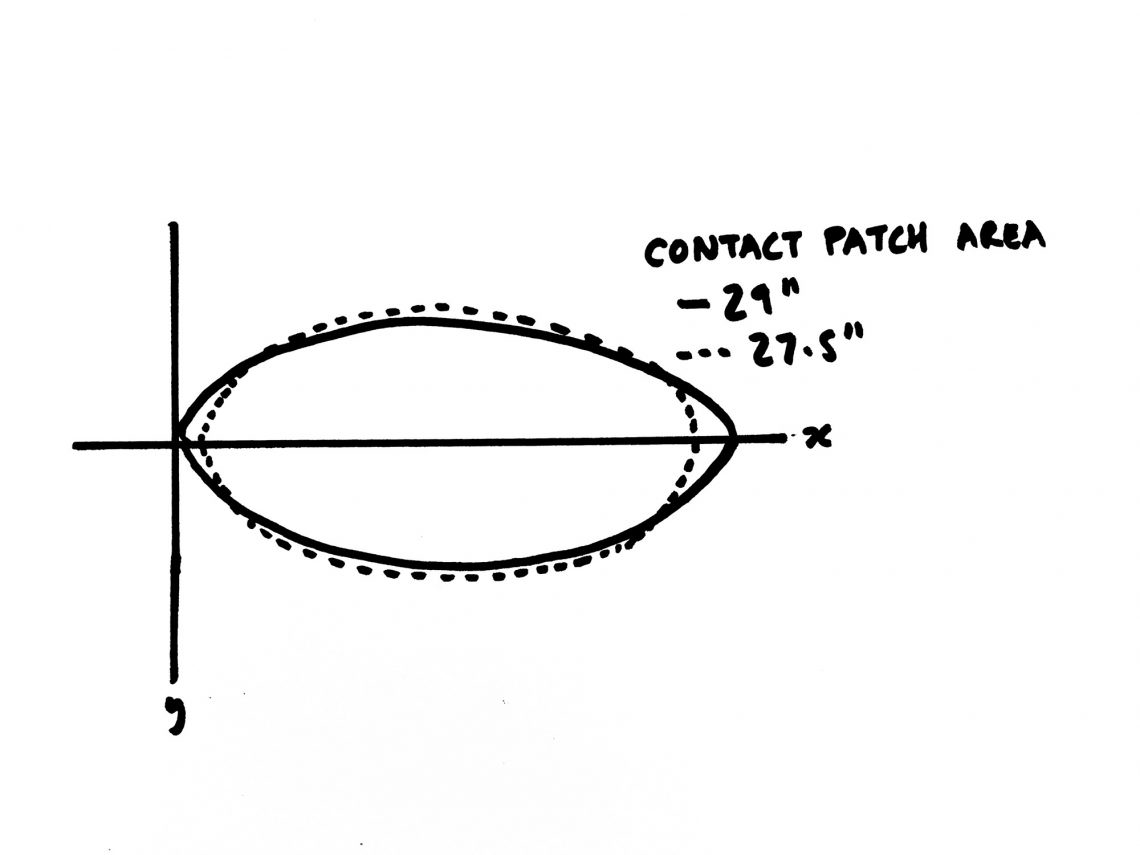
One of the most common arguments favouring 29″ wheels is that they roll over obstacles more easily. But is that true? In theory, they have better rollover characteristics, and a larger diameter wheel is less likely to get hung up on rocks and roots. Suppose you ignore the suspension and the deformation of the tire for a second. In that case, the following applies: when a wheel hits an obstacle, it forms a virtual ramp – imagine a line that connects the highest point of the obstacle with the tire’s contact patch. This ramp indicates the direction in which the wheel must move to overcome the obstacle. The steeper this ramp, the more difficult it is for the bike to ride the obstacle. If the wheel hits an obstacle (the edge of a rock, for example), the contact patch of a 29″ wheel is further away from the top of the edge than the contact patch of a 27.5″ wheel, flattening the virtual ramp. As such, the 29″ wheel rolls up and over the edge while the smaller 27.5″ wheel slams into it and gets stuck.
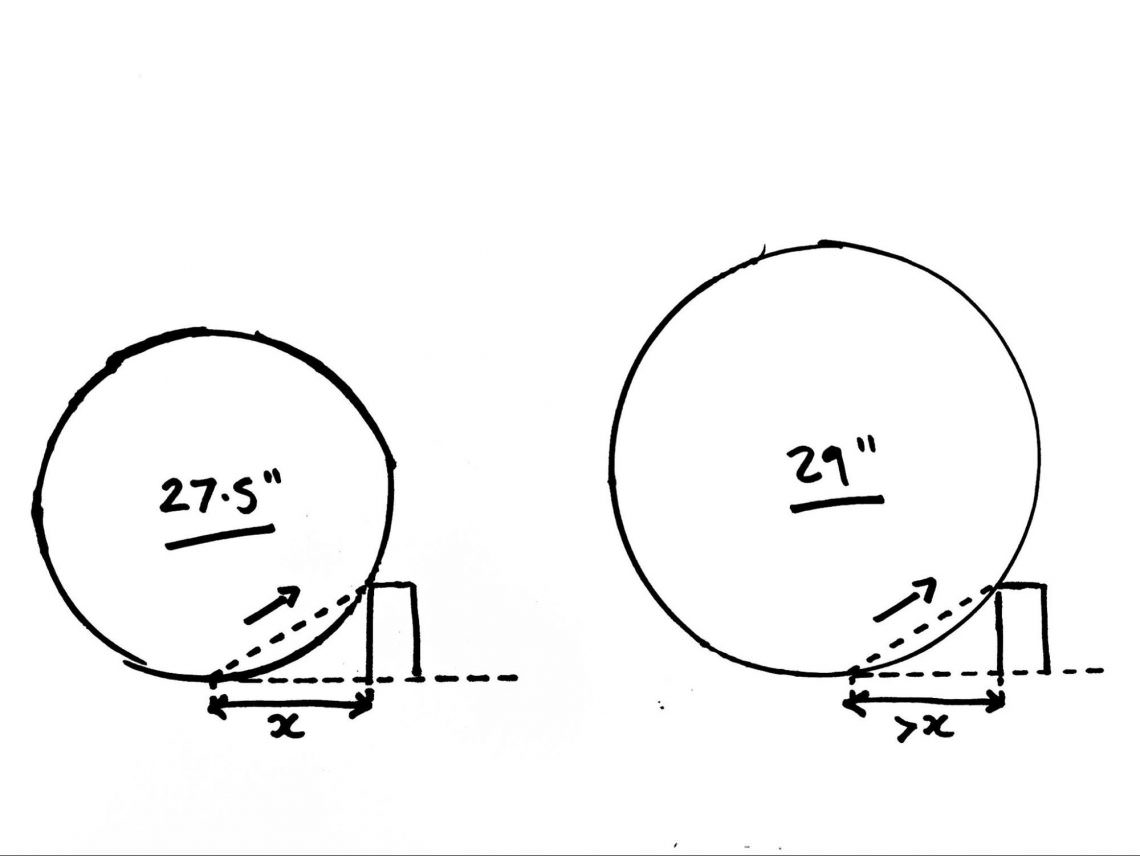
All these basic physical properties can be explained in theory using formulas and laws. However, they only apply to the advantages and disadvantages of a specific diameter in isolation, forgetting that the wheels form part of an infinitely more complex physical system, the mountain bike. At ENDURO, we always deal with the mountain bike as a whole system instead of looking at isolated parameters. And we can assure you that the influence of the wheel size on the bike’s geometry and kinematics has a much greater impact on the handling than all the theoretical values combined!
We can assure you that the influence of the wheel size on the bike’s geometry and kinematics has a much greater impact on the handling than all the theoretical values combined!
Even though it may not look like it at first glance, things can get very tight at the rear when a full suspension bike compresses. When it bottoms out, you’re left with little more than a hair’s breadth between the tire and the seat tube or saddle. It goes without saying that the bike designers have to make space for the bigger wheel or, conversely, they can position a smaller wheel closer to the bottom bracket. This relationship can be gleaned from the chainstay length in the geometry table. While Canyon have designed the 29″ Spectral with 437 mm chainstays, the smaller rear wheel (27.5″ and mullet) allows them to make the chainstays 5 mm shorter. Though we’ve taken a look at most of the factors, an essential factor remains untouched: YOU! The most significant influence on a mountain bike’s handling remains to be the rider. As such, the wheel size should match your proportions. While this is less of a problem for the average guy, small riders can run into problems with a 29″ wheel on the rear. As with the frame, clearance between the rider’s rear end and the rear tire can be damn tight, depending on the situation.
27.5″ vs mullet vs 29″ on the trail
Every trail is different, which is why it’s so important to compare the wheel concepts on a variety of trails to find out which advantages and disadvantages they offer on different types of terrain. But we wouldn’t be ENDURO if our priority wasn’t having fun on the descents. So, the three Canyon Spectrals and their different wheel size concepts had to battle it out on the varied trails of Kronplatz in South Tyrol. In addition to flow trails and big jump lines, they had to prove themselves on natural singletrack and quite a few full-on enduro stages. Besides being a lot of fun, the bikes revealed apparent differences in their handling and character on the trail.
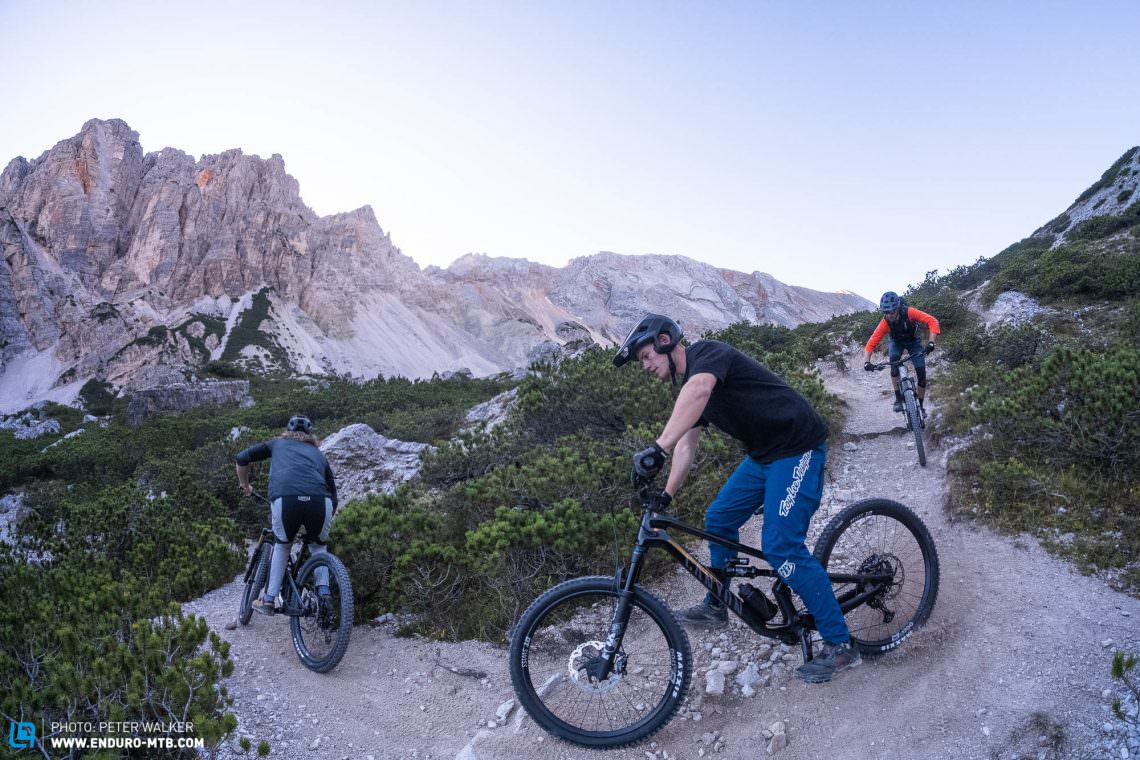
For the 27.5″ Spectral, the flowier, the better. It feels most comfortable on smooth trails with rollers and jumps, where it’s sure to put the biggest grin on the rider’s face. The “small” Spectral shows how well it’s balanced when riding through open corners and berms and is easy to control, offering the most intuitive handling of all three bikes. Not only beginners but also experienced riders benefit from this as it allows them playfully to push the bike’s limits, cutting corners to make them even tighter.
Balance is key, and the excellently balanced 27.5″ bike loves railing corners, especially on flowing trails.
In contrast to the 29″ Spectral, which feels equally balanced through corners, the 27.5″ bike prefers manualling out of berms and encourages you to style it up over every roller. The mullet bike can’t keep up with the other two, primarily through open corners on slippery terrain, requiring a skilled rider. You must actively shift your weight forward to generate enough grip on the front wheel. Those who can do this will be rewarded for their effort, especially through berms. If you like, you can easily break out the rear wheel of the mullet bike, getting it to drift. An experienced rider will enjoy going low on the inside line as they enter a berm only to flick the rear wheel out at the apex, emitting a loud burp from the rear tire and leaving behind a cloud of dust.
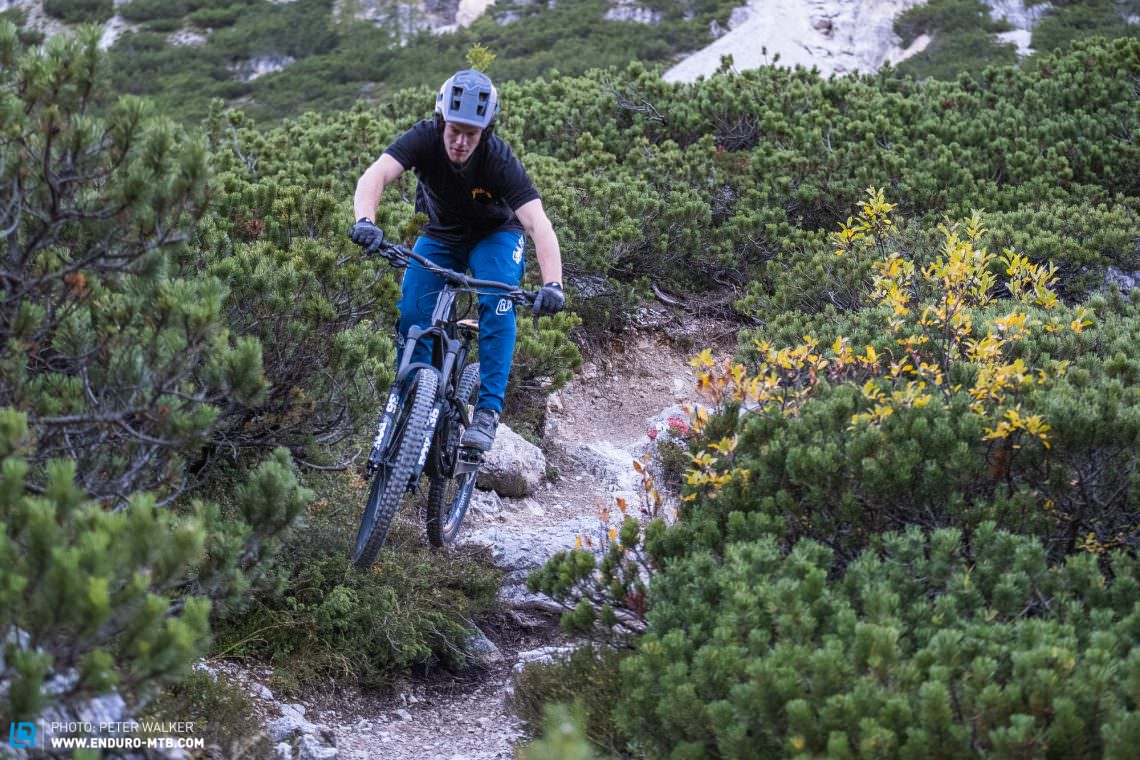
As soon as the shaped trails get faster and, above all, the braking bumps get bigger, the 27.5″ Spectral has to give way to its competitors with the larger front wheels. The washboard leading into a berm can be felt more acutely in your upper body with the small front wheel. While the 29″ Spectral ploughs through bumps at high speed and isn’t even phased by them, the 27.5″ Spectral requires creative line choice to avoid the biggest potholes. Therefore, the mullet and 29er bikes are more composed as you approach big jumps, allowing you to hit them at the right speed. They’re also more stable in the air and thus improve rider confidence. It sounds like a contradiction, but both the mullet and the full 29er instil you with the confidence to get sideways, and so you’re more likely to style it up on them than on the 27.5″ bike, even though the smaller wheels are more agile.
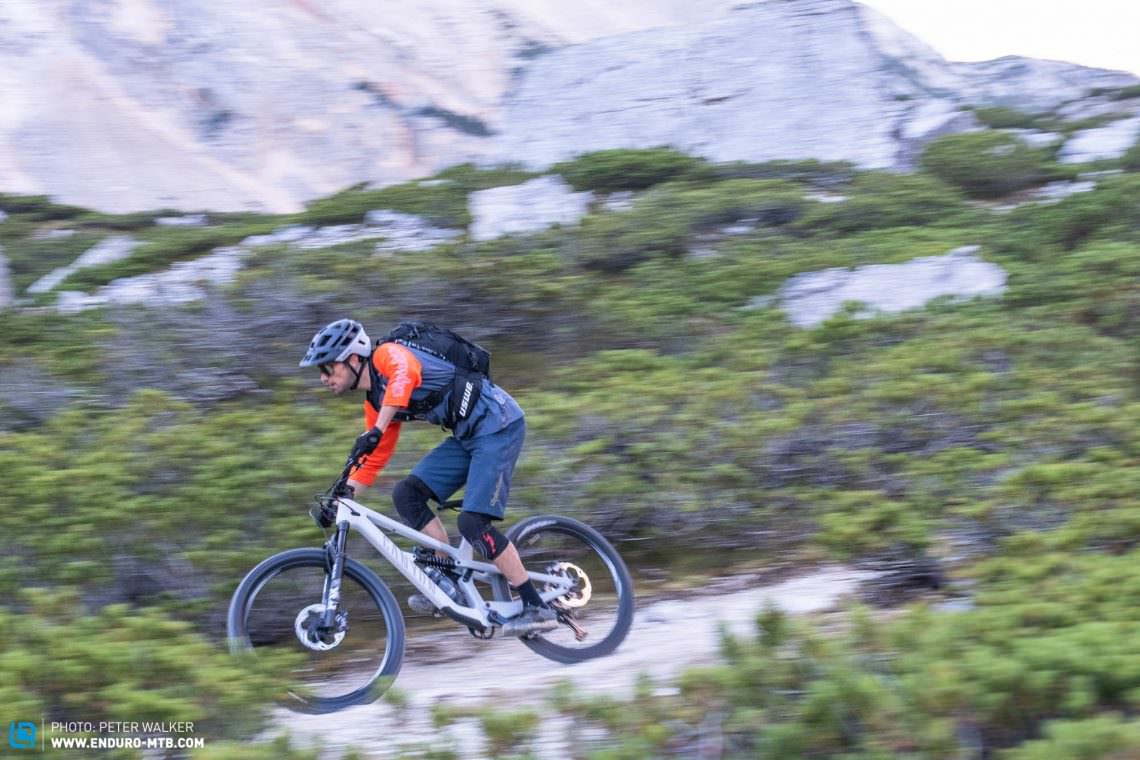
Bike parks and trail centres are one thing, but how do the three Canyon Spectrals fare on natural singletrack and ultra-steep enduro stages? In short, the rougher the terrain, the better the 29″ front wheel performs! What the 27.5″ Spectral already revealed about itself on braking bumps in the bike park becomes even more pronounced as soon as you have roots and rocks hitting the front wheel. However, in contrast to the braking bumps, it is not the intensity of the impact but rather the way the wheels get hung up and brake the bike that demands a lot from the rider. While the mullet and 29er bikes simply roll up and over some large boulders, the 27.5″ bike gets stuck on the same obstacle, requiring more upper body strength and a better riding technique. This phenomenon isn’t as pronounced on the rear wheel. You’ll see this when comparing the rollover characteristics of the 29er and the mullet bikes, as they’re able to blast over roots and rocks at about the same speed.
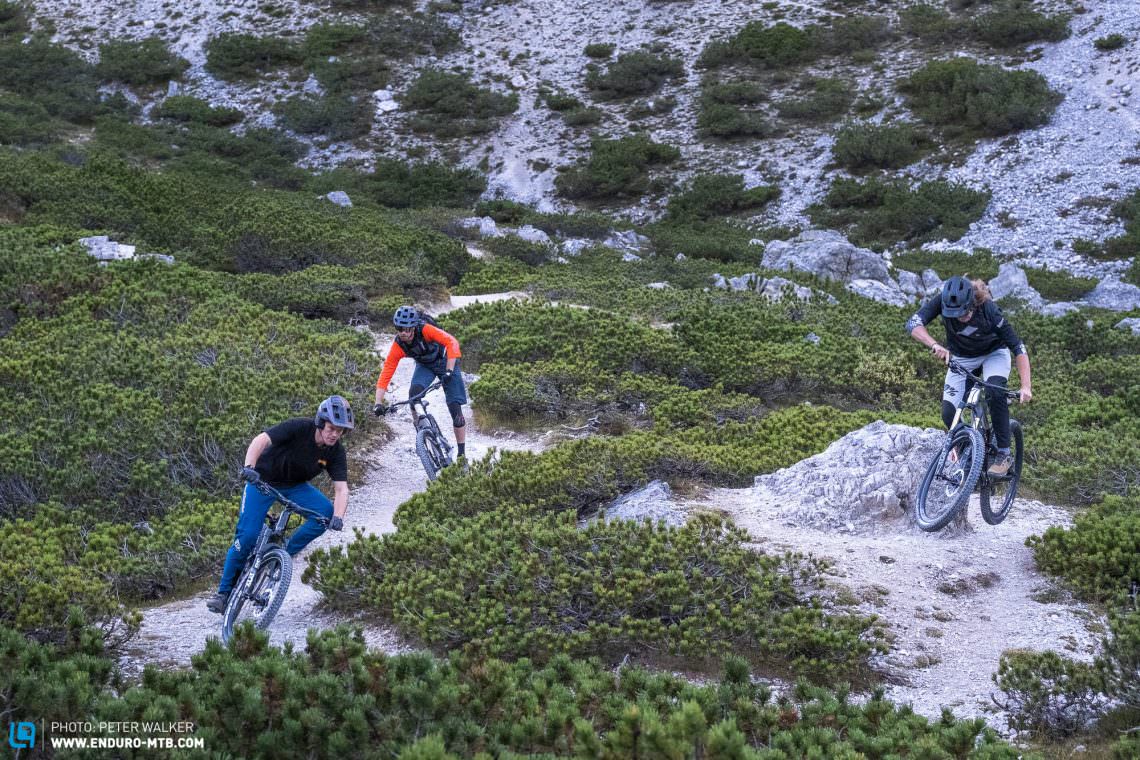
In addition to open corners and berms, you’ll notice the biggest difference between the 29” and mullet bike on really steep trails and at high speed. The faster the trail, the more composed the 29″ Spectral becomes. The fast rotation of the large wheels stabilises the bike during side impacts and, in combination with the slightly longer wheelbase, improve straight-line stability. In contrast, the mullet bike tends to break out a little easier at the rear. The shorter chainstays of the mullet reveal their strengths through hairpin bends and down drops. A quick pull on the rear brake has it drifting through a tight curve, leaving the less manoeuvrable 29″ Spectral behind.
Aboard the mullet bike; the steeper, the better. Though it’s demanding to ride on flat trails, it becomes manoeuvrable and confidence-inspiring when things get steep.
On drops that you can roll, the 29″ Spectral pushes the rider further over the bars. On the one hand, this is due to the longer wheelbase and, on the other, the reduced freedom of movement between the rider and the rear tire. The increased freedom of movement on the mullet setup is more confidence-inspiring in these instances, particularly for smaller riders.

From specialist to generalist: as the wheel size increases, so does the versatility of the Canyon Spectral. The 29er cuts a fine figure wherever you ride.
Our ENDURO test crew is 1.85 m tall on average and they agree, 29″ is the best wheel size for them. The 29″ Canyon Spectral covered by far the widest range of uses and always offered intuitive handling, both with a leisurely riding style and at high speed. The 27.5″ model is impressive, especially through corners and on flowing terrain. However, unless you’re riding on perfectly maintained flow trails, it can’t keep up with the competition. Contrary to popular belief, the mullet bike doesn’t offer the best of both worlds. Instead, the mixed wheels result in entirely different handling from which only experienced riders can benefit.
Conclusion
29″! If you’re wondering which is the best wheel size, this is the short answer. The 29″ Canyon Spectral simply performs on every trail, no matter who’s riding. While many theoretical arguments are just that and hardly have any noticeable influence on handling, we’ve seen here that the front wheel’s rollover characteristics and the bike’s cornering balance have decisive effects on its character. Of course, if you’re looking for the specific characteristics of a 27.5″ bike or need more freedom of movement, you can always resort to the other wheel sizes.
Did you enjoy this article? If so, we would be stoked if you decide to support us with a monthly contribution. By becoming a supporter of ENDURO, you will help secure a sustainable future for high-quality mountain bike journalism. Click here to learn more.
Words: Photos: Peter Walker









